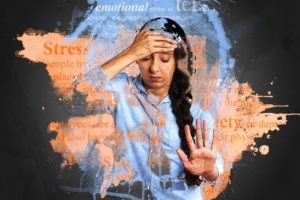 What does “Trauma” actually mean? A good working definition could be “any experience that comes our way too fast, too soon, and too much”. As human beings we are equipped physically and psychologically to adapt to a certain level of change in our environment, but if the change comes at us “too fast”, too suddenly, and with too much intensity, our systems become overwhelmed. The “overwhelm” is not really about the situation, per se, its more about our ability to react to the situation.
What does “Trauma” actually mean? A good working definition could be “any experience that comes our way too fast, too soon, and too much”. As human beings we are equipped physically and psychologically to adapt to a certain level of change in our environment, but if the change comes at us “too fast”, too suddenly, and with too much intensity, our systems become overwhelmed. The “overwhelm” is not really about the situation, per se, its more about our ability to react to the situation.
The Pandemic Is A Collective Trauma
Using the above definition, it is clear that a global pandemic fits the definition of “Collective trauma”. None of us has ever experienced anything like this before, and it is still going on with no clear end in sight. For over a year the predictability and security of our daily lives has been disrupted, and we feel afraid and uncertain. It is not a comfortable feeling.
Trauma is a condition of both body and mind.
Here is the thing. The body and the mind are meant to work together as a “unifying” whole in order for us to be perfectly prepared when we sense a “threat” in our environment. In days of old, when “early man” had to move quickly away from the very real and immediate threat of a wild animal, for example, our nervous system went into hyper drive. Extra adrenaline and cortisol were able to curse quickly through our neurotransmitters and provide us with energy. Once the threat was gone, the adrenaline and cortisol were rapidly dissipated. This is the way it’s meant to work. Fast forward to today’s world and the very real and ongoing existential “threat” of global pandemic, and we see a build up of the “stress” hormones of adrenaline and cortisol. We find ourselves in constant fear and hypervigalent “readiness” for a perceived potential catastrophe
So, how can we “recalibrate” our nervous systems to deal with the stress, which has become our collective trauma?
The answer, I believe, lies in all the ways we can begin to “soothe” mind and body. Soothing is achieved through physical touch, for example, so incorporating multiple experiences of physical “touch” can be vital to our well-being. This can mean simple “hugs” (when safe), with your friends and loved ones, or it may mean a massage, or a hot bath or shower. These “sensory” experiences can help to dissipate the stress that is stored in the body so we can reintegrate body and mind again. Also important is plenty of restful and restorative sleep. Even if you are alone, you can practice good “sleep hygiene and you can establish a physical connection with yourself by laying a hand over your heart to feel your heartbeat, or giving yourself a simple squeeze. These simple gestures are life affirming and grounding. They can be very important.
So, take some time with yourself to think of all the ways you can make a better physical connection with yourself and with your world. In the end its all about the connections.
It may sound trite, but its still true. We will get through this together.

